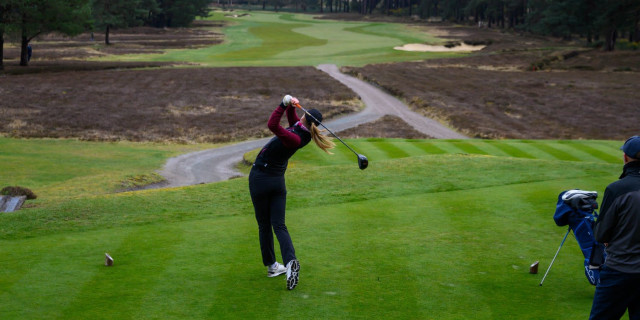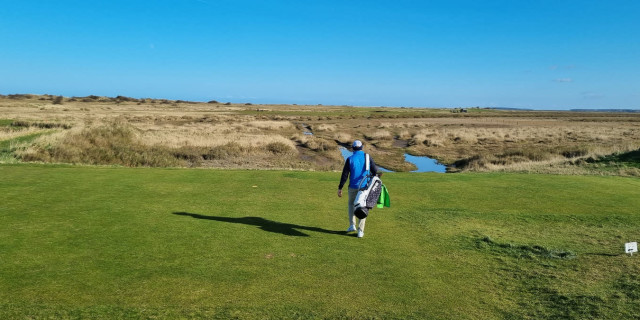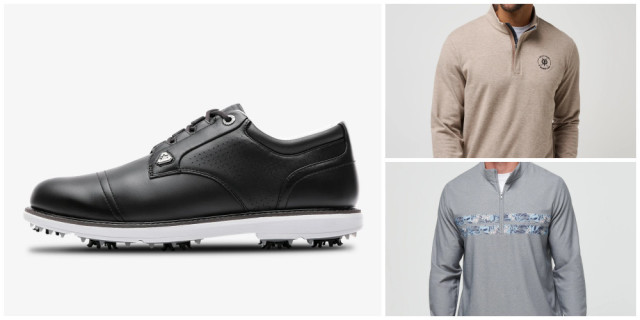
Why You Don't Hit The Golf Ball Farther
No matter how good you are, every golfer would love to hit the ball a little longer than they currently do, as that extra yardage can make all the difference on the course, putting shorter irons into your hands over approach shots, and perhaps even making the lengthiest of par 5s reachable.
We've heard a lot about the impact of increased distance in the elite game, which is why The R&A and USGA are introducing new restrictions that have been intended to curb that trend, but for the rest of us, the mere mortals, distance has been largely stagnant in recent memory despite all the improvements in golf equipment technology and manufacturing.
The Distance Insights Project Report published ahead of the 2020 season - which is the most recent governing body assessment of everyday amateur golfers - looked at the distances hit by players from a variety of handicap categories, which determined that the average driving distance of male amateurs was 216 yards, with the average for females being 147 yards.
More recently, we studied data in 2025, which presented similar findings, meaning that little has changed in the past half decade or so.
But what is stopping golfers - and you - from hitting the ball farther?
Golfshake's Ryan Rastall, the Head Pro at Howley Hall Golf Club in Leeds, took a closer look at this topic, using Trackman analysis, describing in a new video how loft, shaft, swing speed and the angle you attack the ball can impact the distance you hit it.
Using a TaylorMade Qi35 Driver, switching between three different heads with a trio of different lofts, and moving between four different shafts, and striking the ball with a swing speed of 80mph, 90mph, and 100mph, he sought to explain why you hit the ball the distances that you do, and potentially showing improvements that could be changed either through equipment choices or by making adjustments to your technique.
Swing Speed

(Image Credit: Kevin Diss Photography)
It's logical that the faster you swing the club, the longer the distance it creates will be. Golfers on the PGA Tour average around 115mph with their driver, which is unobtainable for the overwhelming majority of us, but a little more speed will deliver more power.
First swinging around 80mph for his test, which is a common speed for the average club golfer, Ryan carried the ball 175 yards, with the overall total being 208 yards.
Taking it a little further, Ryan then swung around 90mph, which produced a carry of 205 yards and an overall distance of 237 yards, a significant gain from an increased swing speed.
Finally, taking it to that milestone mark of 100mph, Ryan achieved a carry of 237 yards and a total length of 259 yards with his drive.
It's clear that even modest gains with your swing speed could make a major difference.
Attack Angle & Spin Rate
But speed is not everything, as the angle you attack the ball in your swing path can have a dramatic impact on the spin rate of the shot and therefore the yardage it carries and runs for.
Most club golfers will typically slice, having an out-to-in swing path and will hit down on the ball, which is a notable factor in limiting your distance.
Swinging with a neutral path into the ball, at 80mph, Trackman recorded Ryan's spin rate at roughly 2,000 RPM, but when he hit across and down on the golf ball, the spin rate rose to 4,000 RPM and saw a drop in total distance of around ten yards.
That was replicated when swinging a little faster at 90mph, with the cut shot only carrying 195 yards, down on 205 with the neutral path.
Swinging at 100mph, Ryan's neutral swing path led to a carry of 259 yards, while the slice, cutting across the ball angle saw an eye-catching decline to 226 yards, even with that faster swing speed.
Ultimately, an out-to-in swing path takes yardage off, which is something that golfers could seek to address by consulting a coach in a series of lessons.
It's not just the speed you swing the club, but also HOW that makes a difference. Hitting the driver at his normal swing speed of around 117mph with a shallower and more upwards swing path to control the ball better led to a spin rate of 2,400, a carry of 286 yards and a total of 313 yards.
Hitting up the ball knocks spin way off, leading to increased distance, but a driver swung in that manner will potentially require a little more loft to keep it straighter and under control.
Loft & Shaft of Your Driver
It's not just your speed or technique that limits the yardages you reach with the driver in hand, but also the nature of the equipment itself.
Finding the ideal combination of loft and shaft style to go with your game - something that can only be achieved through consulting a custom fitting expert - is a way to gain extra yards that you didn't think would be possible.
Previously, it was thought that golfers with an average swing speed always required drivers with a higher loft to hit the ball farther, which is still typically true for those with the lowest speeds who need that extra help, but with a lower loft and more upward swing path, you can gain greater distances - something that is seen in long distance competitors who deploy drivers with little loft but with incredible speeds and upward angle of attack to reduce spin and gain the most roll.
Discovering the perfect marriage between your angle of attack, swing speed, and the loft (and accompanying shaft) of the driver you've got in the bag is essential to gaining that additional yardage on the course.
The way to combine that is by seeing a professional for both detailed lessons and to undergo a club fitting.
If you want to know more, watch Ryan's full testing session and description below.
Related Content
How Far Should You Hit Your Driver?
How Far Should Average Golfers Hit Their Driver
How to Hit Your Driver Straighter & Longer - 3 Simple Tips
About the author

Kieran Clark is the Digital Editor of Golfshake. He oversees editorial content, community engagement, forums, and social media channels. A lifelong golfer from the Isle of Bute in Scotland who has now lived in St Andrews for a decade, he began playing at the age of five and maintains a passion for exploring courses, with a particular affection for historic layouts. Kieran regularly contributes in-depth opinion pieces and features, drawing on his enthusiasm for the game and its culture.
Tags: GOLFERS Golf daily picks









